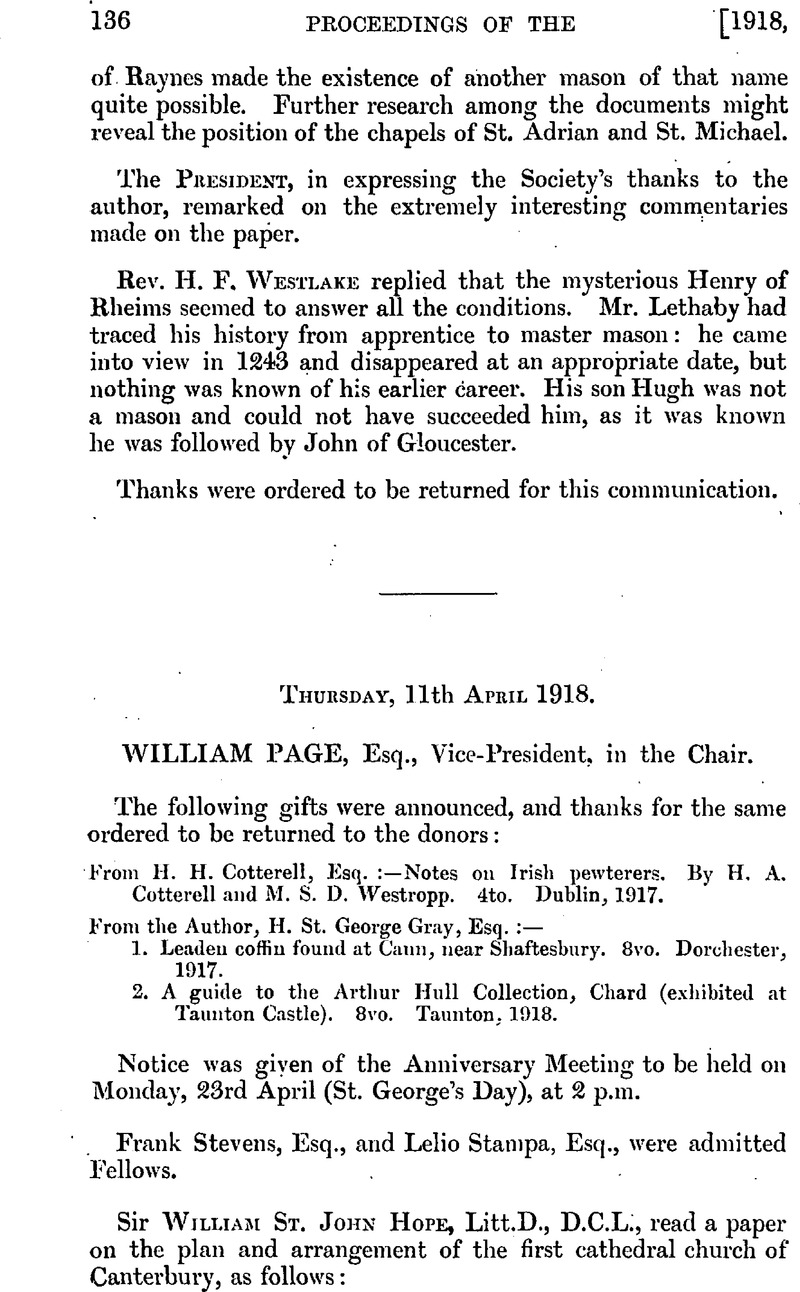Published online by Cambridge University Press: 10 May 2010

page 137 note 1 Willis, R., The Architectural History of Canterbury Cathedral, London, 1845Google Scholar.
page 137 note 2 I am indebted to Mr. A. Hamilton Thompson for the revision of this translation.
page 140 note 1 Scott, George Gilbert, An Essay on the History of English Church Architecture (London, 1881), pl. ixGoogle Scholar.
page 140 note 2 Brown, G. Baldwin, The Arts in Early England (London, 1903), ii, 260Google Scholar.
page 140 note 3 The Archaeological Journal, liii, 293–351.
page 140 note 4 See the plan in Archaeologia, liii, 564.
page 142 note 1 Op. cit. 102.
page 142 note 2 Op. cit. 39.
page 144 note 1 Op. cit. 190.
page 146 note 1 Arch. Journ. v, 85–117. The plan of the church and its attached buildings forms plate xviii of Mr. Scott's work already cited.
page 150 note 1 Op. cit. 11.
page 150 note 2 Ibid. 26.
page 150 note 3 Ibid. 26.
page 151 note 1 Ibid. 28.
page 151 note 2 Op. cit. 37.
page 151 note 3 Ibid. 263.
page 151 note 4 Ibid. 267.
page 153 note 1 Op. cit. pl. xvii, fig. 2.
page 153 note 2 Pl. xv, fig. 1. De Vogüé, Syrie centrale, ii, pls. cxxiii–cxxiv.
page 153 note 3 De Vogüé, ii, pls. cxxxii–cxxxv.
page 153 note 4 Thus in 1245–6 the constable of Windsor Castle is ordered
quod fieri faciat unum caminum in camera ultra portam eiusdem Turris.
In April 1247 the sheriff of Wilts, is ordered that in the castle of Sarum
faciat quandam domum ultra puteum in eodem castro et quandam rotam ad aquam hauriendam.
Clearly a well-house over the well, with a wheel for drawing water.
A similar order to the constable of Windsor in 1256 directs
domum ultra predictum fontem una cum rota et aliis ingeniis de novo fieri facias :
that is, he is to make new a house over the well with a wheel and other engines.
page 154 note 1 Miracula Suncti Dunstani
page 155 note 1 Op. cit., p. 15, note h.
page 155 note 2 See a paper by the writer in Proceedings, xxii, 416–424.